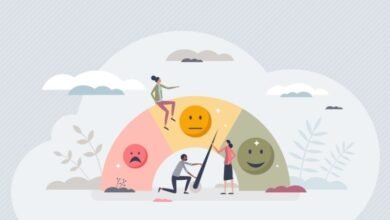
What Is Metacognition And How Does It Benefit Learners?
Cognition refers to your thinking processes, while metacognition involves knowing your strengths and weaknesses and when you should ask for help. In other words, you engage in self-monitoring and can change your learning tactics when you realize that something doesn’t work. Achieving such a high level of self-awareness helps learners be successful, learn independently, and increase their resilience. These effects are particularly beneficial for disadvantaged students who have trouble maintaining knowledge and require extra attention from their teachers. However, metacognition benefits learning in all educational levels as long as educators have received the appropriate training. Read on to explore strategies and exercises educators can use to implement metacognition.
Ways Tutors Can Implement Metacognition
Split Lessons Into Stages
For metacognition to benefit learners, educators must create a clear and organized structure to help students apply their prior knowledge to a task. This structure is made up of the following 4 stages:
Stage 1: Tacit
The first stage is focused on each student and involves no awareness of metacognitive knowledge. Teachers give learners a lesson starter and allocate time to think about their knowledge on the matter and the strategies they used in the past to learn about the same topic.
Stage 2: Aware
The second stage should revolve around the students’ individual plans. Instructors must explain the goal clearly and in detail. Then, learners can carve out their approach to the subject, the time it will take them to complete it, and any possible struggles they might face. They may also make projections on how well they will perform based on their primary understanding of their thinking patterns.
Stage 3: Strategic
The third stage refers to students performing the given task. Halfway through, educators can help them out by asking them how their chosen strategy is working out or whether they need to change it. Even if someone is confused, they must find a way to get past it by utilizing problem solving, decision making, evidence seeking, etc.
Stage 4: Reflective
Last, when a task is finished, teachers must allow some time for students to review their project and see what didn’t go as planned and which strategy worked well for them. Educators can achieve that through targeted questions such as “What worked well for you and what problems did you come across?”. Or “What could you have done to improve your performance?”. These questions foster self-regulation and encourage reflection, thus leading to better comprehension and control of thinking patterns.
Assign Challenging Tasks
People tend to learn more effectively when tasks are not overly easy and require more effort from their side. That’s why educators must adjust the difficulty to match each learner’s abilities. To successfully achieve that, teachers must know the cognitive capabilities of each learner. Returning to the stages from the first step, tacit learners aren’t aware of their metacognitive abilities and don’t follow any specific learning strategy. Aware learners are more conscious of their thinking, but they don’t necessarily plan it. On the other hand, strategic learners organize their workload and thinking to solve any task or difficulty. Finally, reflective learners criticize their strategies as they’re learning and change them if they deem them unsuccessful. Depending on each learner’s metacognition stage, teachers must either show extra attention or withdraw.
Metacognition Exercises That Benefit Learning
Thinking Journals
Educators must promote the use of personal notetaking, which can take various forms, including journals, mind maps, blogs, and phone applications. Therefore, students can keep track of their progress and note down their feelings, questions, and ideas that pop up during class. Teachers may ask learners various questions at the end of the week to initiate their metacognitive thinking. For example, they can ask them about the easiest and hardest tasks of the past week and which learning strategies worked the most. Or they may ask what helps them study efficiently at home and which habits are harmful to their performance. These notes shouldn’t be collected or graded by educators. Instead, they must serve as a starting point for self-awareness and evaluation.
KWL Charts
The benefits metacognition has for learners can be initiated through the use of KWL charts. They help students organize their thinking and strategies before, during, and after a task. K stands for “know” and refers to the knowledge someone has before they start working on a new topic. W stands for “want” and pushes the learner to think about what they wish to learn from a project. Lastly, L stands for “learn” and asks individuals to note down what a project taught them. During the second stage of “want,” educators may monitor learners and ask them questions regarding their strategies to check whether they work or need to be modified.
Apply Rules When Asking For Help
Self-directed knowledge and problem solving are two key ingredients in metacognition. For learners to achieve that, they must rely on their abilities and refrain from seeking help with the slightest difficulty. Therefore, during metacognition exercises, educators must set their rules and not receive any questions. Instead, they may redirect learners to first ask another classmate about their struggle and try to find a solution as a team. If there is still confusion, then they can ask their instructor for assistance. Also, students should be encouraged to think about what exactly they need their teacher’s help for. Questions must be specific and not general.
Mnemonics
Another way metacognition can benefit learning is through mnemonics, an instructional strategy that helps people retrieve past information and improve retention. For example, tutors may use words or expressions to empower students’ memory. If they need them to remember some key colors, they may use the acronym ROY G BIV, which refers to red, orange, yellow, green, blue, indigo, and violet. Additionally, chunking or grouping a large number of numbers may be effective. For instance, if the numbers 630278532902 are hard to remember, split them into groups of four. This strategy has been proven to be very beneficial, even for people with dementia.
Reciprocal Teaching
Through this approach, teachers take a step back and encourage independent learning. Students can read texts out loud and try to understand without help what they’ve read, the meaning of the vocabulary, and answer any questions through extensive thinking. Their classmates can pitch in and offer their assistance. For example, if a student is reading a certain word incorrectly, another learner can pronounce the word correctly and explain what it means. Additionally, the whole class can have a conversation about what they’ve read and try to find its meaning. At the end of this process, the educator can explain unknown words and ask provoking questions that push pupils to use their critical thinking.
Conclusion
Metacognition benefits learners by instilling self-awareness and self-regulation in their learning practices, making them study independently. This doesn’t mean that teachers aren’t needed. They must ensure to remind learners of their goals and provide feedback. They serve as guides in everyone’s efforts to reflect on their past knowledge and use it to solve present issues. Metacognitive thinking must be incorporated in schools from the early stages, where encouragement to think critically is at the forefront.
Source link




